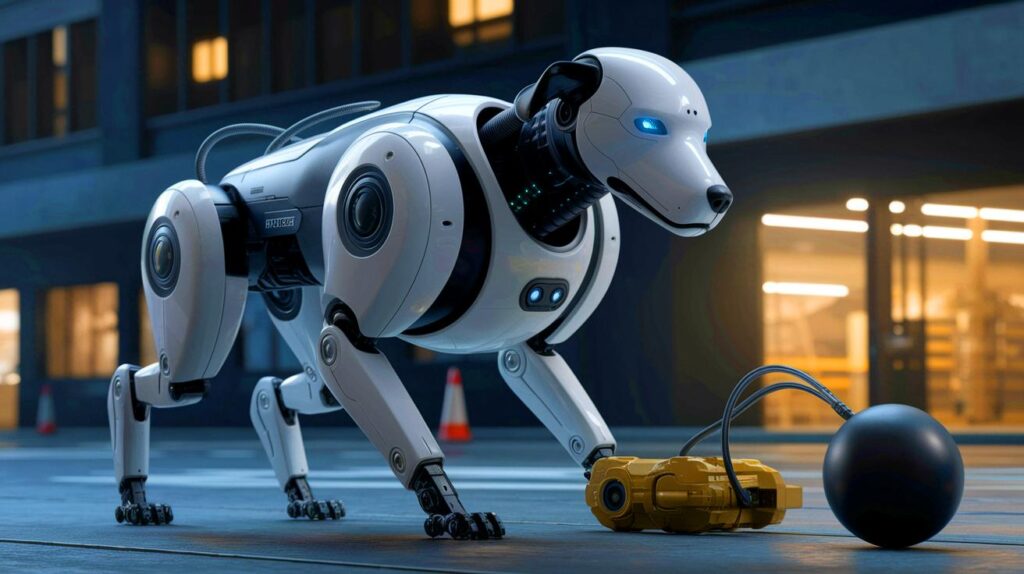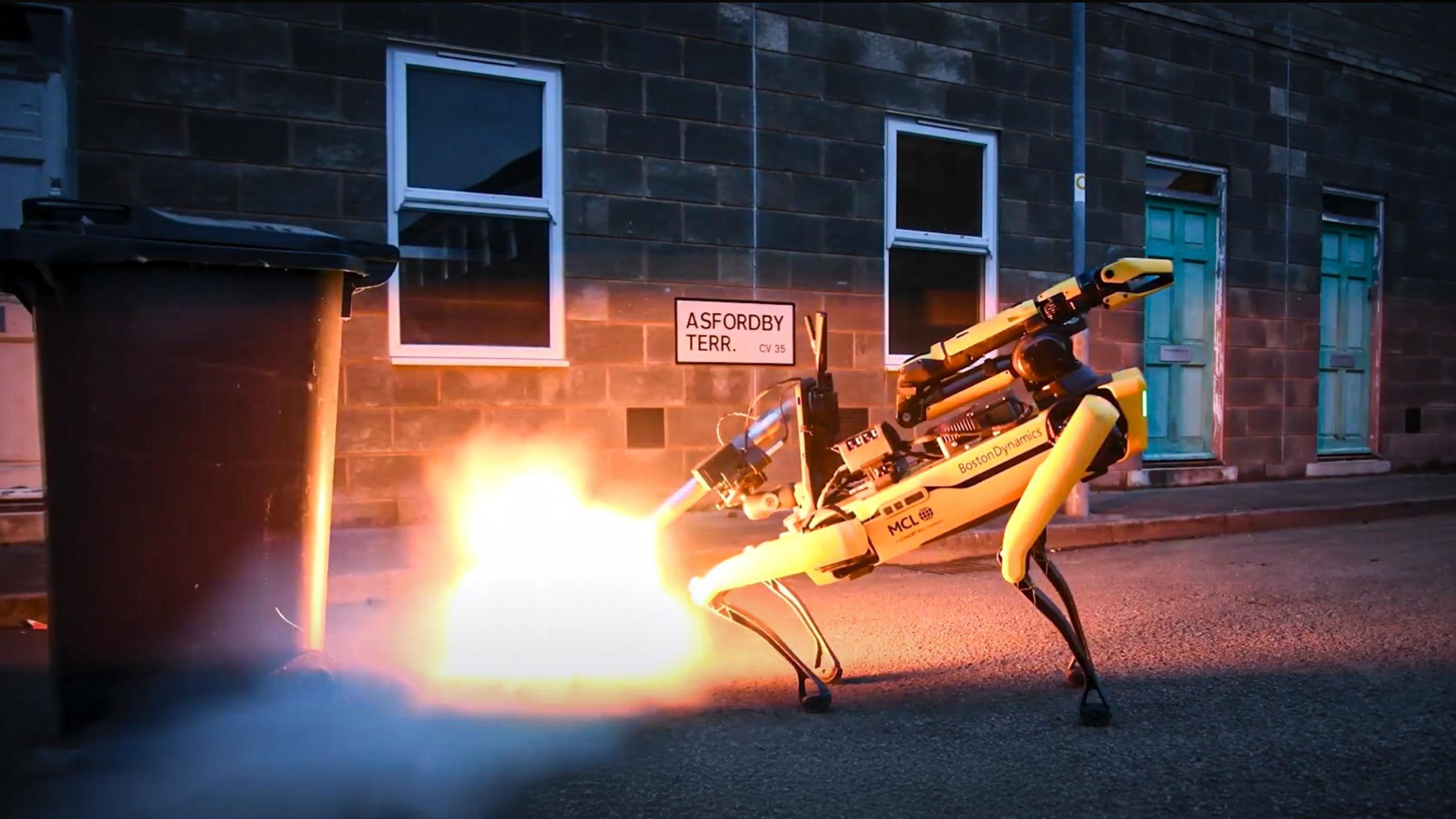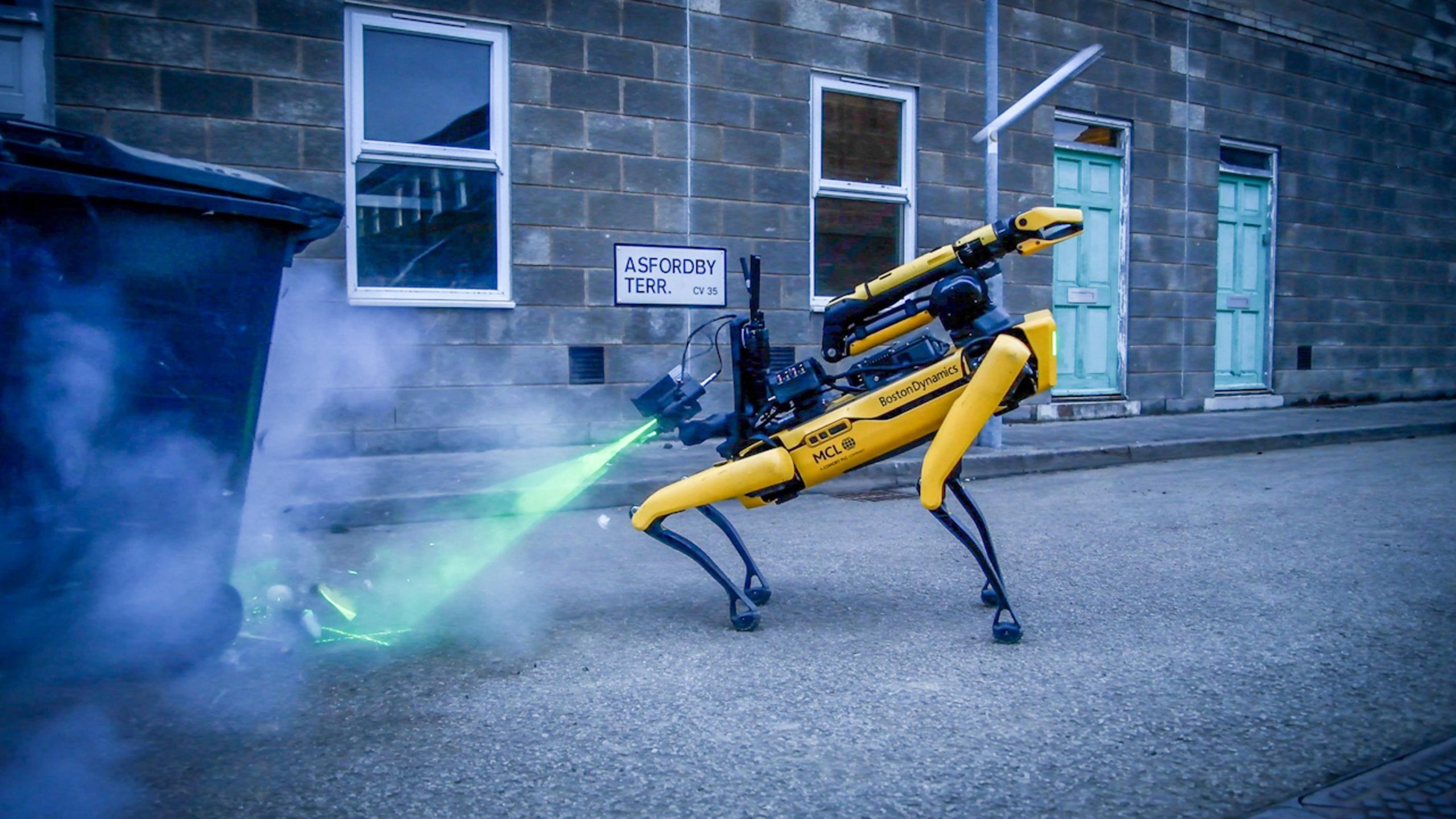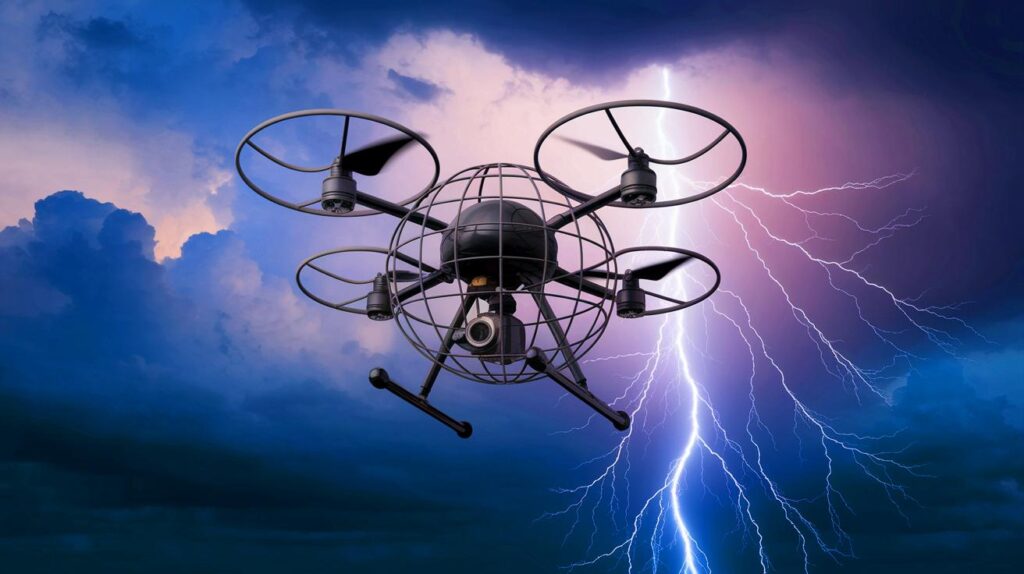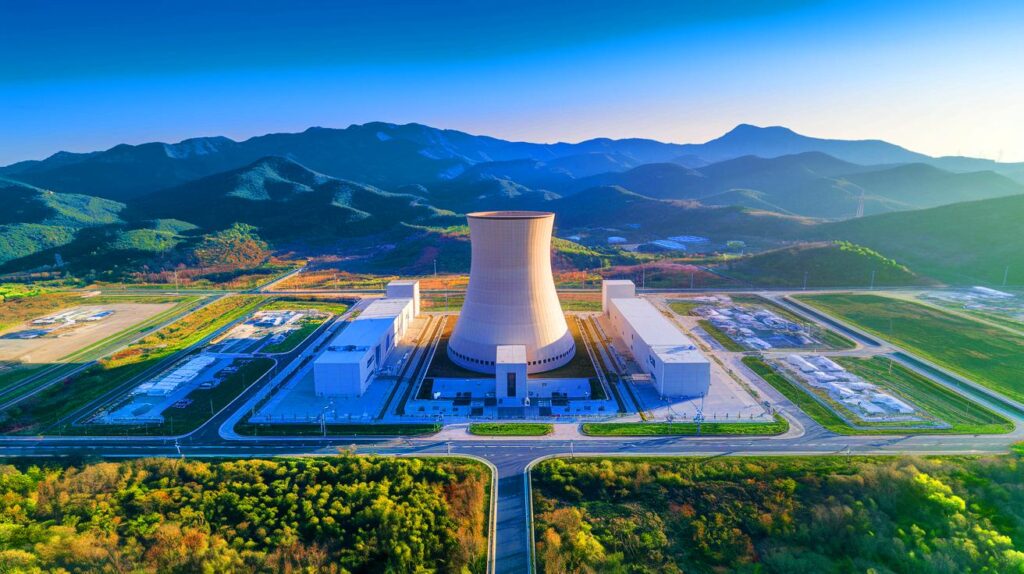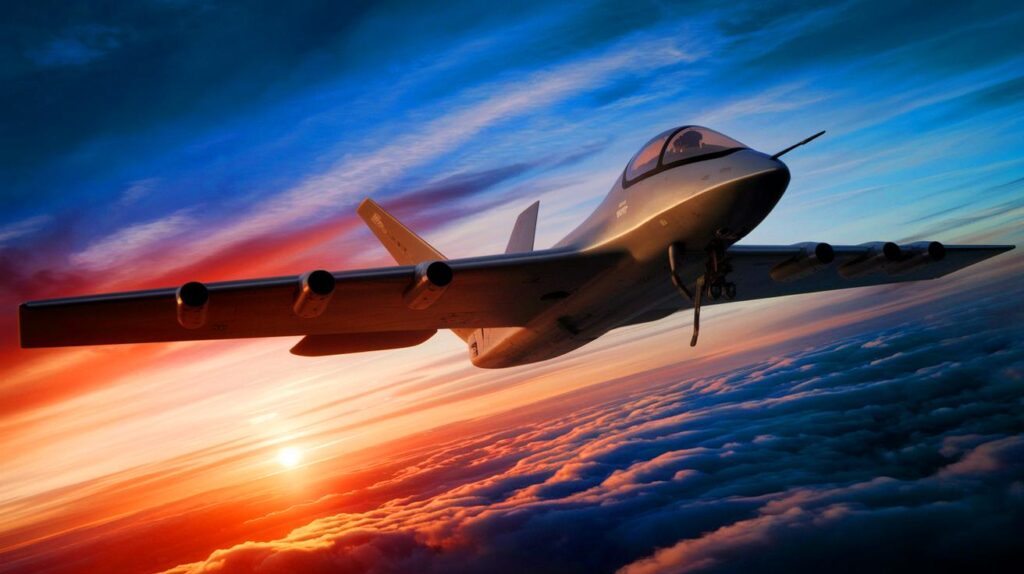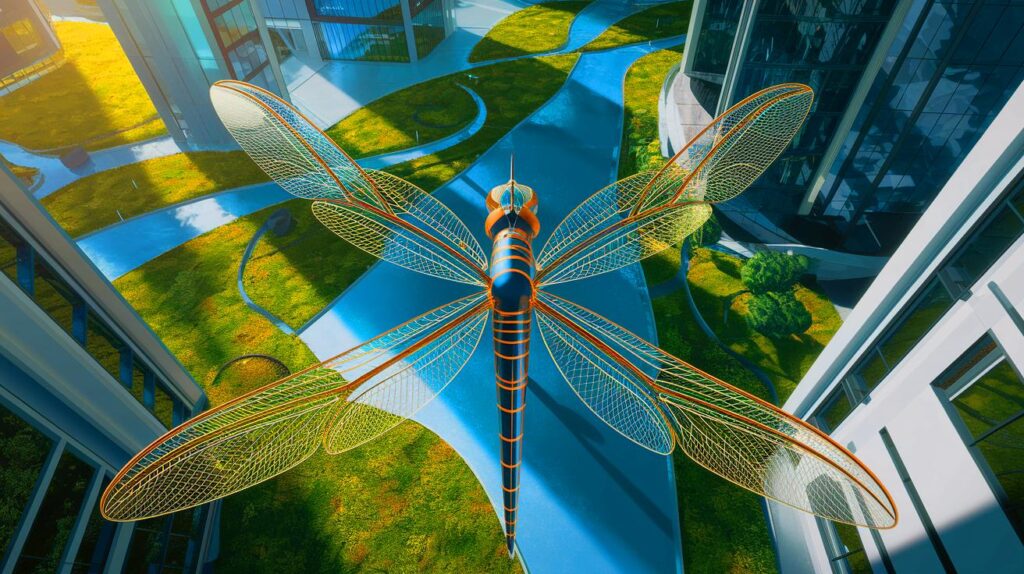| IN BRIEF |
|
Technological advancements are rapidly transforming our daily lives, and the military is no exception. Among the most surprising innovations, robot dogs now play a crucial role in detecting and disabling bombs. This initiative by the UK Ministry of Defense aims to make these operations safer and more efficient. Let’s explore how these canine machines are revolutionizing the mine clearance sector.
A History Marked by Innovation
Since the introduction of the first mine-clearing robot by the British Army in 1972 to address threats from the IRA, significant progress has been made. The early models, such as the Wheelbarrow Mark 7, were simple battery-powered carts equipped with a remote-controlled arm to handle suspicious packages. Their primary mission was to transport bombs to a secure container for safe detonation. The technologies of the time were limited to these rudimentary tasks.
Over the years, these robots have undergone significant upgrades. High-resolution cameras, a variety of sensor arrays, articulated manipulators, and haptic feedback have transformed these machines into sophisticated tools. These advancements have enabled greater accuracy and efficiency in mine-clearing operations, reducing risks for human operators.
The Capabilities of Modern Robot Dogs
New generations of robots, incorporating dog-inspired mechanisms, are pushing the boundaries of what is possible. In recent trials conducted by the Defense Science and Technology Laboratory (Dstl), these robots demonstrated their ability to detect, analyze, and disable bombs with increased efficiency. With artificial intelligence, these robots can perform precise and delicate movements, allowing human operators to focus on strategic aspects of the mission.
Equipped with robotic arms and bolt guns, these devices can handle small improvised explosive devices (IEDs). Their agility allows them to navigate complex environments, overcoming stairs and obstacles, and opening doors, ensuring a safer and more effective intervention.
Drones Supporting Operations
In addition to robot dogs, drones are deployed to optimize mine clearance operations. They play a crucial role not only in locating bombs but also in monitoring the area. Their presence ensures that the public remains at a safe distance during interventions. These flying devices add an extra dimension in terms of both safety and efficiency.
The development of these technologies stems from close collaboration between the military, industry, and academic fields. According to Professor Andy Bell, head of science and technology at Dstl, this synergy allows for the full exploitation of technological advancements to protect populations from deadly threats. By merging military and commercial systems, the British defense demonstrates how innovation can transform national security.
Future Perspectives for Military Security
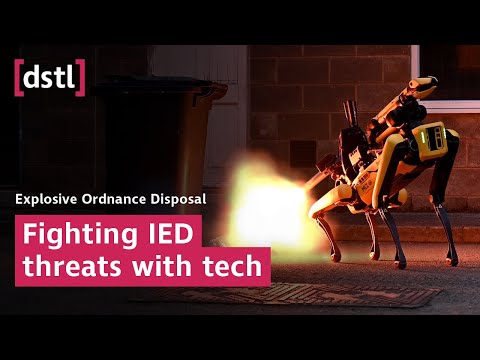

The integration of these technologies into the military domain opens new perspectives for security. Robot dogs and drones are just the beginning of an era where automation and artificial intelligence will play a dominant role in defense operations. These advancements promise to significantly reduce risks for soldiers by keeping them away from immediate danger zones.
However, these innovations also raise ethical and practical questions. How can we ensure that these machines act in the best interest of humanity? What will be the role of humans in future military operations that are largely automated? These questions will require in-depth reflections to balance technological progress and human responsibility.
As technology continues to transform our world, robot dogs perfectly illustrate how surprising innovations can enhance our collective security. But how will these advancements be integrated into other sectors of society, and what challenges will we face to maximize their potential while minimizing risks?

